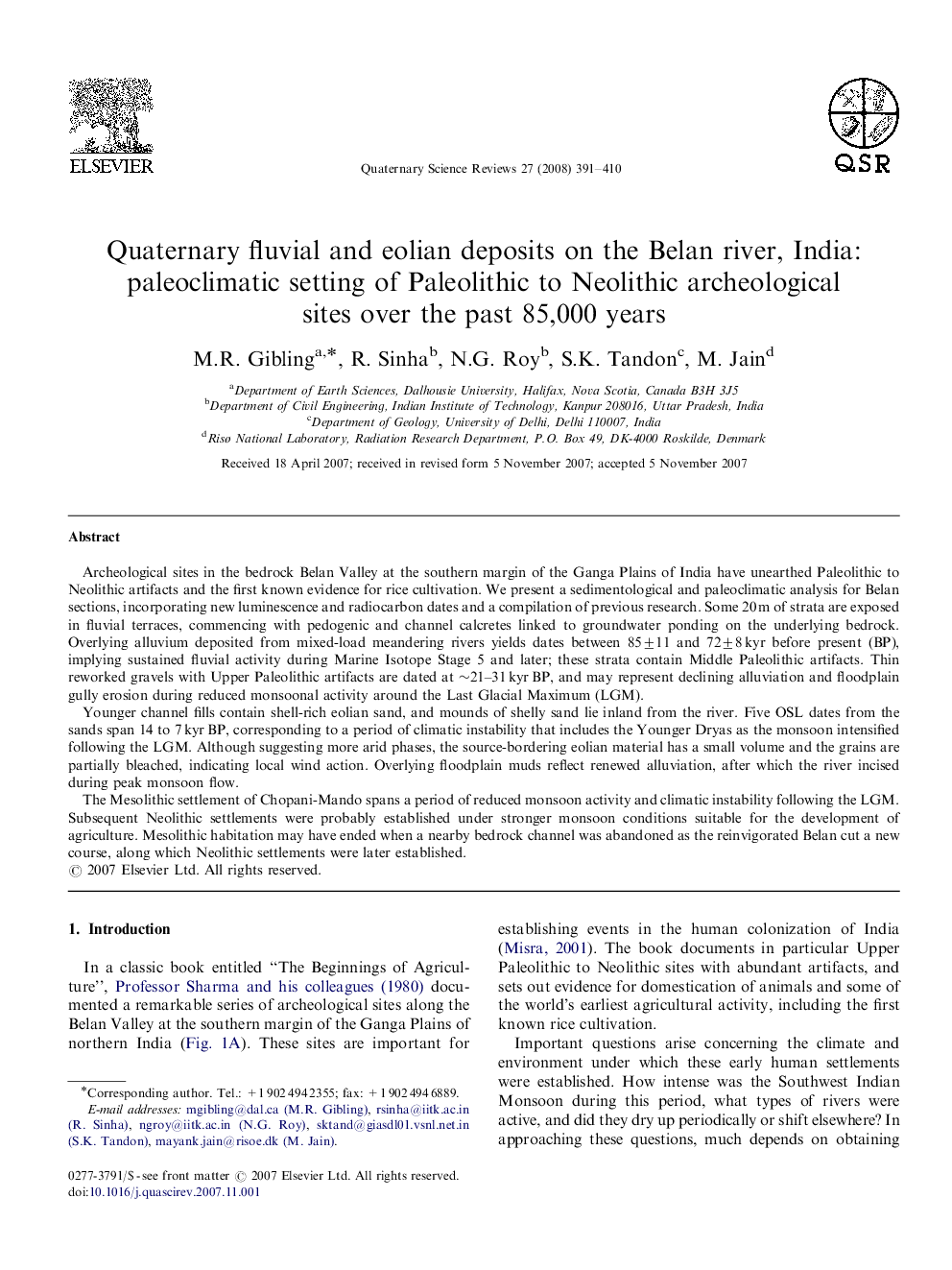| کد مقاله | کد نشریه | سال انتشار | مقاله انگلیسی | نسخه تمام متن |
|---|---|---|---|---|
| 4737458 | 1640958 | 2008 | 20 صفحه PDF | دانلود رایگان |

Archeological sites in the bedrock Belan Valley at the southern margin of the Ganga Plains of India have unearthed Paleolithic to Neolithic artifacts and the first known evidence for rice cultivation. We present a sedimentological and paleoclimatic analysis for Belan sections, incorporating new luminescence and radiocarbon dates and a compilation of previous research. Some 20 m of strata are exposed in fluvial terraces, commencing with pedogenic and channel calcretes linked to groundwater ponding on the underlying bedrock. Overlying alluvium deposited from mixed-load meandering rivers yields dates between 85±11 and 72±8 kyr before present (BP), implying sustained fluvial activity during Marine Isotope Stage 5 and later; these strata contain Middle Paleolithic artifacts. Thin reworked gravels with Upper Paleolithic artifacts are dated at ∼21–31 kyr BP, and may represent declining alluviation and floodplain gully erosion during reduced monsoonal activity around the Last Glacial Maximum (LGM).Younger channel fills contain shell-rich eolian sand, and mounds of shelly sand lie inland from the river. Five OSL dates from the sands span 14 to 7 kyr BP, corresponding to a period of climatic instability that includes the Younger Dryas as the monsoon intensified following the LGM. Although suggesting more arid phases, the source-bordering eolian material has a small volume and the grains are partially bleached, indicating local wind action. Overlying floodplain muds reflect renewed alluviation, after which the river incised during peak monsoon flow.The Mesolithic settlement of Chopani-Mando spans a period of reduced monsoon activity and climatic instability following the LGM. Subsequent Neolithic settlements were probably established under stronger monsoon conditions suitable for the development of agriculture. Mesolithic habitation may have ended when a nearby bedrock channel was abandoned as the reinvigorated Belan cut a new course, along which Neolithic settlements were later established.
Journal: Quaternary Science Reviews - Volume 27, Issues 3–4, February 2008, Pages 391–410